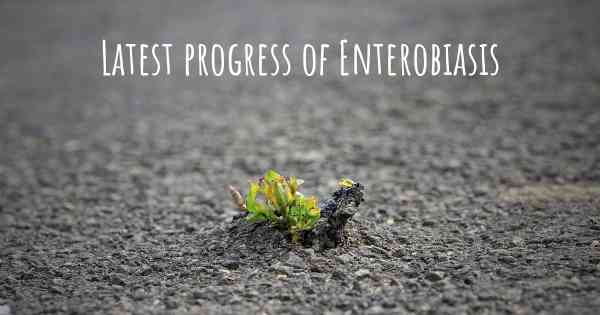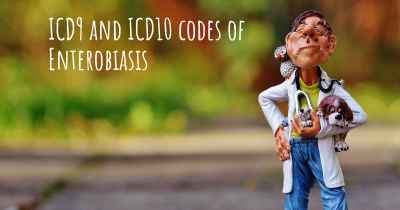What are the latest advances in Enterobiasis?
Here you can see the latest advances and discoveries made regarding Enterobiasis.

Enterobiasis, also known as pinworm infection, is a common parasitic infection caused by the roundworm Enterobius vermicularis. It primarily affects children and is highly contagious. The main symptom of enterobiasis is intense itching around the anus, especially at night. While enterobiasis is not usually a serious condition, it can cause discomfort and disrupt daily activities. Over the years, there have been several advances in the diagnosis, treatment, and prevention of enterobiasis.
1. Improved Diagnostic Techniques:
Accurate diagnosis is crucial for effective management of enterobiasis. Traditional methods involved the examination of stool samples for the presence of pinworm eggs. However, this method had limitations due to the intermittent shedding of eggs and the need for multiple samples. Recently, more sensitive diagnostic techniques have been developed, such as the adhesive cellophane tape test. This test involves pressing a transparent adhesive tape against the perianal region to collect pinworm eggs, which can then be visualized under a microscope. These improved diagnostic techniques have enhanced the accuracy and efficiency of enterobiasis diagnosis.
2. Novel Drug Therapies:
Treatment of enterobiasis typically involves the use of anthelmintic drugs, such as mebendazole or albendazole. These drugs effectively kill the adult worms, but reinfection can occur if the eggs are not eliminated. To address this, new drug therapies have been developed to target both the adult worms and the eggs. One such drug is nitazoxanide, which has shown promising results in clinical trials. Nitazoxanide has demonstrated efficacy against both adult worms and eggs, reducing the risk of reinfection. These novel drug therapies offer improved treatment options for enterobiasis.
3. Hygiene Measures and Prevention Strategies:
Preventing the spread of enterobiasis is essential to control its transmission. Hygiene measures play a crucial role in preventing infection and reinfection. Advancements in hygiene practices, such as regular handwashing with soap and water, especially before meals and after using the toilet, have been effective in reducing the incidence of enterobiasis. Additionally, proper cleaning and disinfection of contaminated surfaces, bedding, and clothing can help prevent the spread of pinworm eggs. Education and awareness campaigns have also been successful in promoting hygiene practices and preventing enterobiasis.
4. Public Health Interventions:
Public health interventions have played a significant role in controlling enterobiasis. Mass drug administration (MDA) programs have been implemented in schools and communities to treat and prevent enterobiasis. These programs involve the distribution of anthelmintic drugs to all individuals, regardless of infection status, to reduce the overall burden of the disease. MDA programs have shown success in reducing the prevalence of enterobiasis in various populations. Additionally, public health initiatives focus on improving sanitation facilities, access to clean water, and overall hygiene practices to further prevent the transmission of enterobiasis.
5. Research and Surveillance:
Ongoing research and surveillance efforts are crucial for understanding the epidemiology and impact of enterobiasis. These efforts help identify high-risk populations, monitor drug resistance, and evaluate the effectiveness of interventions. By studying the genetic diversity of Enterobius vermicularis, researchers can gain insights into the transmission patterns and evolutionary aspects of the parasite. Surveillance programs enable early detection of outbreaks and guide targeted interventions. Continued research and surveillance contribute to the development of evidence-based strategies for the prevention and control of enterobiasis.
In conclusion, enterobiasis has seen significant advances in recent years. Improved diagnostic techniques, novel drug therapies, hygiene measures, public health interventions, and ongoing research have all contributed to the management and prevention of enterobiasis. These advancements offer hope for better control and reduction of the burden of enterobiasis, particularly in vulnerable populations.








